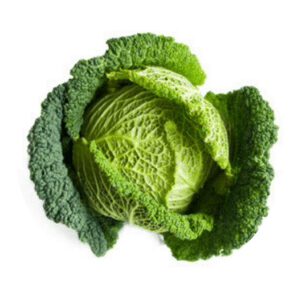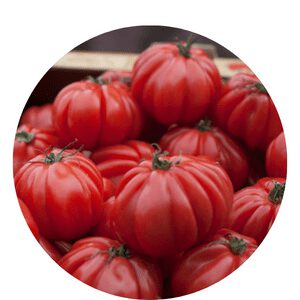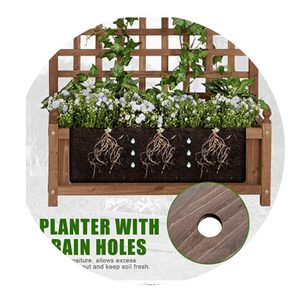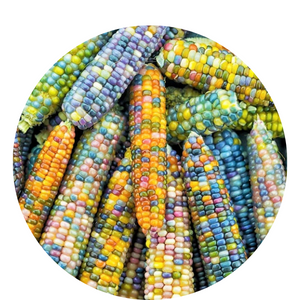Companion planting with pumpkin: What to plant next to pumpkin
Pumpkins are an iconic symbol of autumn and a harvest favorite.
Not only do they provide tasty treats, but they can also be used as part of an effective gardening strategy.
Companion planting is a method of growing different plants together in order to improve their overall health and production.
Pumpkins can be combined with other vegetables, herbs, and flowers in the garden to encourage healthier growth, deter pests, and even enhance the flavor profile of your pumpkins!
Pumpkin companion Menu
Companion Plants for Pumpkin
Pumpkin is a widely popular vegetable, perfect for carving jack-o-lanterns and baking delicious treats.
Growing pumpkins can provide a fun and rewarding experience, but many people don’t realize that certain companion plants can help to make the pumpkin patch even more successful.
Companion planting is the practice of growing two or more types of plants close together to maximize their growth potential and optimize soil fertility.
Beans
Beans are considered one of the best companion plants for pumpkins. They are known to improve soil fertility and fix nitrogen, which is essential for plant growth.
Beans also help in deterring pests like cucumber beetles that attack pumpkin plants.
When grown together, the beans climb up the pumpkin vines, and pumpkin leaves provide shade to the bean roots.
There are different types of beans that can be planted alongside pumpkins, including pole beans and bush beans.
Pole beans grow tall and require support while bush beans have a low profile and don’t need support.
Both types of beans thrive well in rich soil with good drainage.
When planting beans next to pumpkins, it’s important to ensure they don’t compete for nutrients and water since both plants require adequate amounts of these resources.
It’s advisable to alternate rows of pumpkins with rows of beans or plant them in staggered positions so that they don’t grow too close together.
Overall, planting companion crops like beans helps promote a healthy garden ecosystem while increasing yields without using harmful chemicals.
Squash
When it comes to companion planting with pumpkin, squash is an excellent choice.
Not only do they belong to the same family, but they also share similar growing conditions and pests.
Squash can help to deter cucumber beetles and squash bugs from attacking your pumpkins.
Additionally, their deep roots can help to break up soil compaction, allowing for better water and nutrient absorption.
When selecting a type of squash to plant alongside your pumpkins, consider the space you have available.
Bush varieties such as zucchini or yellow crookneck are ideal if you have limited space as they tend to take up less room than vine varieties.
However, if you have ample space in your garden, consider planting larger vine types such as spaghetti or butternut squash.
Planting squash next to pumpkins is straightforward; both plants require full sun and well-draining soil.
It’s recommended that you give each plant at least two feet of space on all sides for optimal growth.
Remember that while companion planting can be beneficial for plant health and pest management, it’s not a guarantee against all potential issues – regular monitoring and maintenance are still necessary for a healthy harvest.
Companion planting with pumpkin plants, You must think hard and consider your lance. Marigolds are an excellent companion, Bringing beneficial properties to the land. Nasturtiums will add to the beauty of your space, Driving away pests from stealing your jack-o-lanterns face. Radishes sowed nearby will help drive away squash bugs, Giving you peace of mind as you do work in the rugs.
Chappy The Gardener
Corn
Corn is a great companion plant for pumpkins. The two plants are known to complement each other’s growth by providing support and shade.
Corn is a tall plant that can provide the much-needed support that pumpkin vines require as they grow and spread out.
Additionally, the broad leaves of corn help to shade the soil around the pumpkin plants, keeping it moist and cool during hot summer days.
When choosing corn varieties to plant with your pumpkins, consider dwarf or bushy types that will not compete for space with the sprawling pumpkin vines.
Some good options include Golden Bantam, Silver Queen, or Country Gentleman. Plant corn seeds about 4-6 inches deep in well-drained soil after all danger of frost has passed.
It’s worth noting that planting corn and pumpkin together can attract pests such as cucumber beetles and squash bugs.
To avoid this problem, try rotating your crops yearly or using natural pest control methods such as introducing beneficial insects like ladybugs into your garden.
Overall, incorporating corn into your companion planting plan for pumpkins can be a great way to maximize space while reaping multiple benefits from both plants’ growth habits.
Chamomile
Chamomile is a herb that many gardeners use to enhance the growth of their pumpkin plants. This plant has a long history of medicinal and therapeutic uses, and it works well as a companion plant for pumpkins.
Chamomile is known for its calming effect on the mind and body, which makes it an excellent stress-reliever for your pumpkin plants.
One of the benefits of chamomile as a companion plant to pumpkin is that it repels pests.
Chamomile attracts beneficial insects such as hoverflies, which feed on aphids and other pests that can damage your pumpkin crop.
Additionally, chamomile improves soil health by adding nitrogen to the soil, promoting the growth of healthy microorganisms, and increasing soil fertility.
Finally, chamomile tea made from fresh or dried flowers can be used as an organic insecticide spray against common pests such as spider mites and thrips.
The tea contains natural compounds that deter these pests without harming your pumpkin plants or other beneficial insects in your garden.
Overall, planting chamomile alongside your pumpkins is an excellent way to improve soil quality, repel harmful insects, and promote overall plant health.
Radishes
Radishes can be a great addition to your pumpkin patch.
Not only do they grow quickly, but they also make for a delicious and healthy snack.
Plus, planting radishes alongside your pumpkins can help deter pests and other insects that may try to feed on your squash.
Another benefit of companion planting with radishes is that their roots will naturally loosen up the soil around them, making it easier for pumpkins to grow deep roots.
Additionally, radishes are known to absorb excess nitrogen in the soil, which can help balance out the levels and promote healthy growth for both crops.
When planting radishes alongside pumpkins, be sure to space them out properly and avoid overcrowding. This will give each plant enough room to grow and thrive without competing for resources.
With proper care and attention, you’ll have a bountiful harvest of pumpkins and tasty radishes in no time!
Marigolds
Marigolds are an excellent choice for companion planting with pumpkin.
Not only do they add a pop of color to your garden, but they also offer several benefits to your pumpkin plants.
Marigolds produce a chemical that repels harmful insects such as root-knot nematodes and whiteflies, which can cause damage to pumpkin roots and leaves.
Planting marigolds alongside pumpkins can thus help keep these pests at bay.
Additionally, marigolds attract beneficial insects such as ladybugs and lacewings that prey on harmful insects like aphids, which tend to infest pumpkin plants.
This means that by planting marigolds alongside pumpkins, you create a natural pest control system that keeps your pumpkins healthy without the need for harmful pesticides.
Finally, marigolds also improve soil health by releasing chemicals that suppress certain types of weeds and inhibit the growth of harmful fungi in the soil.
This helps maintain optimal conditions for growing healthy pumpkins all season long.
Overall, adding marigolds to your garden is a simple yet effective way to support the growth of your pumpkin plants while also enhancing the beauty of your outdoor space.
Sunflowers
Sunflowers are a great companion plant to pumpkin as they both grow well together.
Sunflowers can help deter pests like aphids, which tend to attack pumpkins.
Their root system also helps loosen the soil and improve drainage, which is beneficial for the growth of pumpkin plants.
When planting sunflowers next to pumpkins, it is important to consider their size difference.
Sunflowers grow tall and can shade out smaller plants if planted too closely.
It is recommended to plant sunflowers on the north side of the pumpkin patch so that they do not obstruct sunlight from reaching other plants.
In addition to being a helpful companion plant, sunflowers can also add aesthetic appeal to your garden.
They come in various sizes and colors, ranging from small dwarf varieties to giant ones that can reach up to 15 feet tall.
Whether you are looking for a functional or decorative addition, sunflowers are an excellent choice when planting alongside pumpkins.
Oregano
Oregano is a versatile herb that offers many benefits to the home garden. It’s also an excellent companion plant to grow alongside pumpkins.
Oregano plants are easy to care for and grow well in most soil types, making them an ideal choice for those looking to add a touch of flavor and aroma to their pumpkin patch.
One of the primary benefits of oregano as a companion plant is its ability to repel pests. This herb naturally deters harmful insects like aphids, spider mites, and cabbage loopers that can damage your pumpkin plants.
Additionally, oregano has antimicrobial properties that help keep fungal diseases at bay.
Another advantage of planting oregano next to your pumpkins is its ability to attract beneficial insects like bees and butterflies.
These pollinators play a crucial role in the growth and development of your pumpkin plants by ensuring proper fertilization of blossoms.
Moreover, oregano can also improve soil health by adding nutrients back into the soil as it decomposes over time.
Overall, growing oregano alongside your pumpkin patch is an excellent way to promote healthy growth while minimizing pest problems naturally.
Why These Plants are Good Companions
One of the best things about companion planting is that it can help you to grow healthier, more productive plants with less effort.
When it comes to growing pumpkins, there are a number of plants that make great companions.
For example, beans and peas fix nitrogen in the soil, which is essential for healthy plant growth. Planting them next to pumpkin can provide a natural source of fertilizer for your crop.
Another good companion for pumpkin is corn. This tall crop provides shade and support for the vines as they grow, while the pumpkin helps to suppress weeds around the base of the corn plant.
In addition, marigolds make excellent companions for pumpkin because they deter pests like beetles and nematodes from attacking your crops.
Overall, choosing the right companion plants can help you to create a thriving garden ecosystem where each plant supports and benefits from its neighbors.
Whether you’re growing pumpkins or other crops, taking advantage of these natural pairings can help you achieve better yields and healthier plants with less work on your part.
Nutrient exchange and sharing
Companion planting with pumpkin can be a great way to increase nutrient exchange and sharing in your garden. One of the best plant companions for pumpkin is corn.
Corn provides a natural trellis for pumpkin vines, while pumpkins provide ground cover that helps retain moisture and suppress weeds around corn plants.
Additionally, corn and pumpkins have complementary nutrient needs, which means they can support each other’s growth by exchanging nutrients through their roots.
Another great companion for pumpkins is beans.
Beans are nitrogen-fixing plants, which means they absorb nitrogen from the air and convert it into a form that other plants can use. This can be especially beneficial for pumpkins, as they require a lot of nitrogen to grow healthy foliage and fruit.
In return, pumpkins provide beans with shade and support as they climb up the vines.
Lastly, consider planting marigolds alongside your pumpkins.
Marigolds are known to repel pests like beetles and nematodes that can damage pumpkin plants. They also produce chemicals that help stimulate root growth in nearby plants, which can improve nutrient uptake overall.
Plus, marigolds add a pop of color to your garden while providing these benefits to your pumpkin crop!
Pest control
Companion planting with pumpkin is a great way to control pests in your garden. One of the best plants to pair with pumpkin is marigold.
This beautiful flower has natural pest-repelling properties and can keep harmful insects like aphids, nematodes, and squash bugs at bay.
Marigolds are easy to grow and require very little maintenance, making them a great addition to any garden.
Another plant that works well as a companion for pumpkin is radish.
Radishes help repel beetles, squash bugs, and other pests that can cause damage to your pumpkins. They also grow quickly and do not require much space, making them an ideal choice for small gardens or raised beds.
Additionally, if you plant radishes alongside your pumpkins early enough in the season they will be ready for harvest before the pumpkins start taking up too much space.
Finally, Nasturtiums are another popular option when it comes to companion planting with pumpkin. These flowers attract beneficial insects such as ladybugs which will eat aphids and other harmful pests that may be lurking around your garden.
They also have a peppery taste which makes them a great addition to salads or garnishes for cocktails!
Nasturtiums are easy-to-grow annuals that come in many colors including reds, oranges yellows & creams so you’re sure to find one that matches your style!
Pollination
Pollination is a crucial process in the reproduction of plants. Without pollination, plants cannot produce seeds or fruits.
Pumpkin, like most plants, relies on pollinators such as bees and butterflies to transfer pollen from the male flower to the female flower.
The male flowers are easy to spot with their long stems and no fruit behind them, while the female flowers have a small pumpkin at their base.
Companion planting can help attract pollinators to your pumpkin patch by providing them with nectar and shelter.
Some great companion plants for pumpkins include marigolds, sunflowers, zinnias, and cosmos.
These colorful flowers are not only attractive to pollinators but also add beauty and diversity to your garden.
In addition to companion planting, you can also encourage pollination by hand-pollinating your pumpkin plants.
To do this, simply use a small brush or cotton swab to transfer pollen from the male flower’s stamen (the part that contains pollen) to the female flower’s stigma (the sticky top part).
By taking these steps towards good pollination practices in your garden will yield healthy crops of pumpkins!
Shade and support
Shade and support are two critical factors you should consider when planting pumpkin in your garden.
As a sprawling plant, pumpkin requires adequate space to spread out and grow its fruits.
That said, it’s important to plant shade-tolerant crops alongside pumpkin to help preserve moisture and keep the soil cool during hot weather.
Some of the best companion plants for pumpkin include lettuce, spinach, radish, and beans.
Another key consideration is support for the growing vines.
Pumpkin plants can become heavy and unwieldy as they mature, so providing some form of support can prevent them from collapsing under their own weight or being damaged by strong winds or rain.
Options for supporting your pumpkin plants include trellises, stakes, cages or even other sturdy vegetables like corn stalks.
In summary, when planting pumpkins in your garden consider complementing them with shade-tolerant companion plants while also providing support structures such as trellises or stakes.
Doing so will not only improve the health of your pumpkins but also increase yields while keeping pests at bay!
How to Plant Pumpkin with Companion Plants
Companion planting is a great way to not only maximize the yield of your garden but also create a natural balance that helps prevent pests and diseases from taking over.
When it comes to pumpkin, there are several plants that make excellent companions.
One such plant is corn, which can provide shade for young pumpkins while also attracting beneficial insects like ladybugs and lacewings.
Another great companion plant for pumpkin is beans. These legumes fix nitrogen in the soil, which is an essential nutrient for pumpkins to grow healthy and strong.
Additionally, their vine-like structure allows them to climb up the trellis or cornstalks used as support for the pumpkin vines.
Finally, consider planting marigolds next to your pumpkins. Marigolds are known to repel pests like aphids and squash bugs while also attracting pollinators like bees and butterflies.
Plus, they add a pop of color to your garden with their bright yellow or orange blooms! By incorporating these companion plants into your pumpkin patch, you can create a thriving ecosystem that benefits all the plants in your garden.
Spacing and planting requirements
When it comes to planting pumpkins, spacing is an essential factor to consider.
Pumpkins take up a lot of space, so they need ample room to grow and spread out comfortably.
It’s recommended to plant them in rows with a minimum of 6 feet apart from each other. This way, there will be enough room for the vines to grow without overcrowding the area.
Companion planting is also crucial when growing pumpkins as it helps control pests and diseases naturally.
Companion plants like marigold, borage, nasturtiums, and radishes can be planted next to pumpkin plants as they are known for their pest-repelling properties.
These plants will help deter pests like squash bugs and vine borers that can damage or kill your pumpkin plants.
In addition to companion planting, rotating crops is also advisable when growing pumpkins as this helps prevent soil-borne diseases from building up over time.
When planning your garden layout for pumpkin planting season, make sure you allocate enough space for companion plants while considering crop rotation practices that will help maintain healthy soil conditions year after year.
Best planting locations
When it comes to growing pumpkins, choosing the right planting location is crucial for a successful harvest.
The ideal spot should receive plenty of sunlight and have well-draining soil that’s rich in nutrients.
Avoid planting pumpkins in low-lying areas where water tends to accumulate as this can lead to root rot.
Additionally, it’s important to consider companion plants that can be planted alongside pumpkins.
Companion planting not only helps improve soil fertility and nutrient uptake but also deters pests and promotes healthy growth.
Good companions for pumpkin include herbs like thyme, oregano, and basil, which help repel insects such as squash bugs and cucumber beetles.
Other good options are marigolds, which deter nematodes; beans or peas for their nitrogen-fixing abilities; or even corn since they create a natural trellis for the vines to climb.
By selecting the right planting location and accompanying plants, you’ll be on your way to a bountiful pumpkin harvest come fall!
Timing considerations
Timing considerations are crucial when it comes to companion planting with pumpkin.
It’s important to consider the maturity rate of each plant and how long they will take to reach their full size before making any decisions.
For instance, if you’re planning on planting corn next to your pumpkin, you should ensure that it has already reached at least six inches in height before sowing your pumpkin seeds.
Another factor to keep in mind is the season during which you want to grow your pumpkins. Pumpkins require at least 80-120 days of warm temperatures for optimal growth and maturation.
Therefore, planting them during the right season will be essential for a successful harvest.
Additionally, some plants such as beans and peas can fix nitrogen levels in soil making them great choices for intercropping with pumpkins as they help replenish nutrients required by pumpkins.
Finally, it’s important to pay attention to the overall size of each plant when deciding what should be planted alongside pumpkin.
Some plants such as melons and squash tend to have extensive foliage that can shade smaller crops like radishes or lettuce leading them not growing well due lack of enough sunlight penetration.
Knowing when each crop matures and their growth patterns is key when planning a successful companion garden with pumpkins.
In conclusion, companion planting with pumpkin is an effective way to grow a healthy, hearty crop.
There are many options for companion plants, and each one brings its own unique benefits.
By choosing the right companion plants for your pumpkins, you can provide additional nutrients, create barriers against pests and diseases, maximize space in the garden, and attract beneficial insects.
Taking the time to research the best companions for your pumpkins can ensure you have a successful harvest season.
Click To Grow
Helps Us Grow – Share If You Like




















